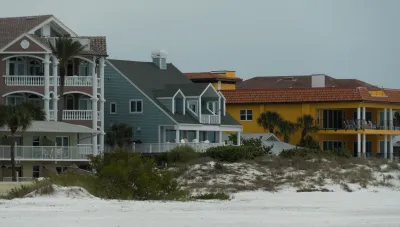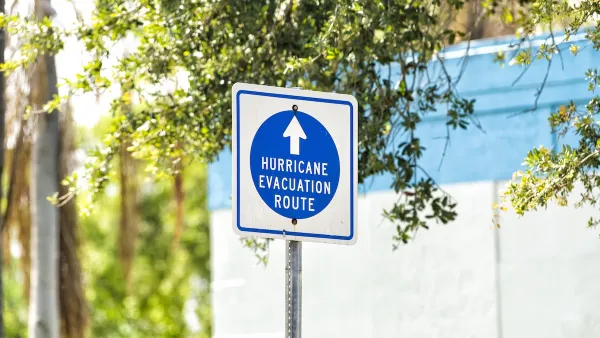The U.S. Corps of Engineers and Redington Shores, Florida are at a standstill: The Corps won’t spend public money to restore private beaches, and homeowners are refusing to grant public access to the beaches behind their home in return for federal assistance.

Redington Shores, Florida, a “well-heeled beach town in Pinellas County” have a problem: the beach between them and the Gulf of Mexico is disappearing fast. According to a Grist article by Jake Bittle, “A series of storms, culminating in last fall’s Hurricane Idalia, have eroded most of the sand that protects Redington Shores and the towns around it, leaving residents just one big wave away from water overtaking their homes.”
The federal government, specifically the U.S. Corps of Engineers, has offered to haul in $42 million of new sand on the condition that 461 of waterfront homeowners provide public points of access to the beaches behind their homes. Pinnellas County officials tried to get homeowners to sign the easements, but half of the homeowners refuse.
“This situation highlights growing tensions between the federal government and homeowners in coastal areas that are threatened by climate change. As sea levels have risen and strong storms have caused greater damage than ever before, the costs of protecting and insuring beachfronts in Florida and other states have increased rapidly,” Bittle writes. He reports that the Corps put the easement policy in place decades ago so that it didn’t spent public money to restore private beaches.
Local and federal officials worry that Redington Shores, Florida, and areas like it where homeowners are more concerned about views and privacy than their homes being decimated are “sitting ducks for the next climate-fueled storm.” But for now, neither the Corps nor the coastal homeowners are willing to budge.
Updated on June 7, 2024 at 4:30 Eastern to reflect that the story was originally published by Grist. We first attributed it to Fast Company, which ran the it as a reprint.
FULL STORY: The homeowner mutiny leaving Florida cities defenseless against hurricanes

National Parks Layoffs Will Cause Communities to Lose Billions
Thousands of essential park workers were laid off this week, just before the busy spring break season.

Retro-silient?: America’s First “Eco-burb,” The Woodlands Turns 50
A master-planned community north of Houston offers lessons on green infrastructure and resilient design, but falls short of its founder’s lofty affordability and walkability goals.

Delivering for America Plan Will Downgrade Mail Service in at Least 49.5 Percent of Zip Codes
Republican and Democrat lawmakers criticize the plan for its disproportionate negative impact on rural communities.

Test News Post 1
This is a summary

Test News Headline 46
Test for the image on the front page.

Balancing Bombs and Butterflies: How the National Guard Protects a Rare Species
The National Guard at Fort Indiantown Gap uses GIS technology and land management strategies to balance military training with conservation efforts, ensuring the survival of the rare eastern regal fritillary butterfly.
Urban Design for Planners 1: Software Tools
This six-course series explores essential urban design concepts using open source software and equips planners with the tools they need to participate fully in the urban design process.
Planning for Universal Design
Learn the tools for implementing Universal Design in planning regulations.
EMC Planning Group, Inc.
Planetizen
Planetizen
Mpact (formerly Rail~Volution)
Great Falls Development Authority, Inc.
HUDs Office of Policy Development and Research
NYU Wagner Graduate School of Public Service





























